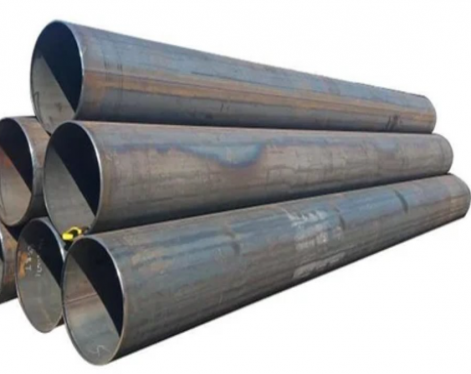After the precision bright seamless tube is heat-treated to obtain austenite, it is quenched at a temperature range of 450-600 °C. Or go through 350-600°C at a slow cooling rate after quenching at 650°C. Or after quenching at 650°C, 16Mn seamless steel pipes and 16Mn seamless steel pipes are heated for a long time in the temperature range of 350-650°C, which will cause aging of precision bright tubes. If the aged precision seamless steel pipe continues to be heated to 650°C and then rapidly cooled, the elasticity can be restored, so it is also called reversible temper brittleness. High temperature temper brittleness is mainly manifested in the increase of ductility-ductility transition temperature of precision bright seamless pipes. The susceptibility to high temperature temper brittleness is generally indicated by the difference in ductility-ductility transition temperature for the toughened and aged cases.

The effects of elements in seamless pipes on high temperature temper brittleness are divided into:
(1) Residue elements that cause high temperature temper brittleness of precision bright tubes, such as phosphorus, tin, antimony, etc.
(2) Aluminum alloy elements that promote or alleviate high temperature temper brittleness in different ways and to different degrees. There are chromium, manganese, nickel, silicon, etc. to play a role in promoting, while molybdenum, tungsten, titanium, etc. play a role in slowing down. Carbon also plays a role. General carbon precision bright tubes are not brittle to high temperature tempering. Relatively sensitive, binary or multiple aluminum alloys containing chromium, manganese, nickel, and silicon.
Seamless steel pipe is a nickel-iron-chromium heat-resistant alloy, which has good high-temperature strength by adding a certain amount of silicon. Because seamless steel pipes have high high-temperature strength, excellent high-temperature oxidation resistance and material corrosion resistance, they are more and more widely used in aerospace + petrochemical equipment and chemical steel industries. Because the coal dry distillation process uses high-temperature liquefied gas to pyrolyze low-grade coal at low temperature, the liquefied gas is heated in a liquefied gas heat treatment furnace and then enters the furnace wall pyrolysis section to pyrolyze the coal. The liquefied gas contains water vapor, a small amount of H2S and other corrosive gases, so it is required that the materials used to make the heat treatment furnace have good heat resistance and corrosion resistance.

The effects of elements in seamless pipes on high temperature temper brittleness are divided into:
(1) Residue elements that cause high temperature temper brittleness of precision bright tubes, such as phosphorus, tin, antimony, etc.
(2) Aluminum alloy elements that promote or alleviate high temperature temper brittleness in different ways and to different degrees. There are chromium, manganese, nickel, silicon, etc. to play a role in promoting, while molybdenum, tungsten, titanium, etc. play a role in slowing down. Carbon also plays a role. General carbon precision bright tubes are not brittle to high temperature tempering. Relatively sensitive, binary or multiple aluminum alloys containing chromium, manganese, nickel, and silicon.
Seamless steel pipe is a nickel-iron-chromium heat-resistant alloy, which has good high-temperature strength by adding a certain amount of silicon. Because seamless steel pipes have high high-temperature strength, excellent high-temperature oxidation resistance and material corrosion resistance, they are more and more widely used in aerospace + petrochemical equipment and chemical steel industries. Because the coal dry distillation process uses high-temperature liquefied gas to pyrolyze low-grade coal at low temperature, the liquefied gas is heated in a liquefied gas heat treatment furnace and then enters the furnace wall pyrolysis section to pyrolyze the coal. The liquefied gas contains water vapor, a small amount of H2S and other corrosive gases, so it is required that the materials used to make the heat treatment furnace have good heat resistance and corrosion resistance.









